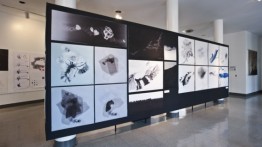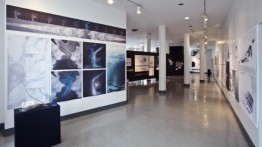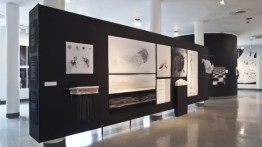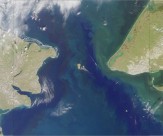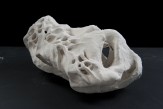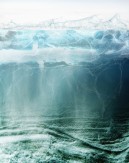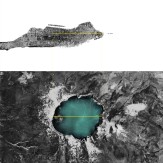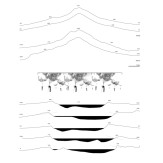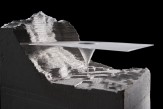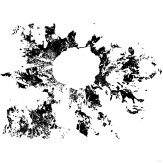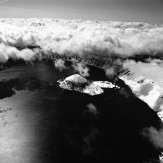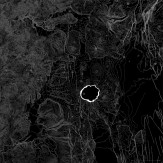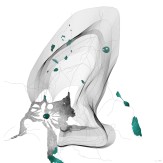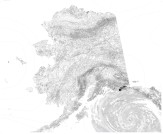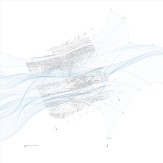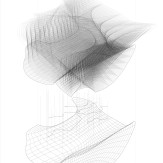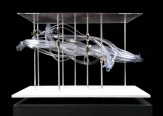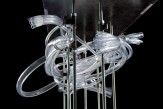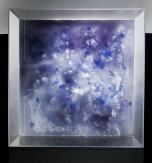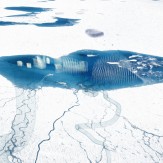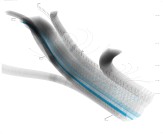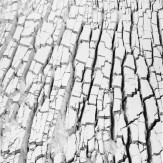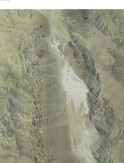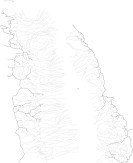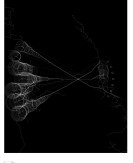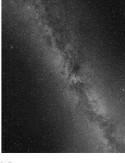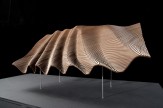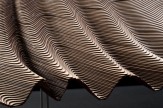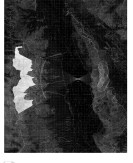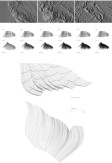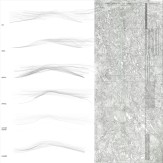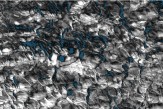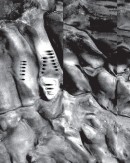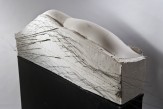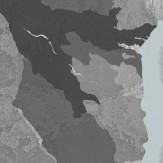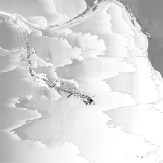Master of Architecture II Spring 2011
ARCHITECTURE OF NATURE / NATURE OF ARCHITECTURE: POTENTIALS
Professor: Diana Agrest
Instructor: Maria Elena Fanna
This Studio focuses on the question of Nature, from the philosophical and scientific discourses that have explained it throughout history in its transformations to the present condition as they affect our modes of habitation.
A different dimension of time and scale is the object of this exploration. In this project, those questions take a preeminent position in the type of natural sites that are selected and the subsequent process of transformation.
The scale is vast in most cases, dealing with places such as deserts, canyons, rivers, glaciers, fault lines, volcanoes, lakes and seashores. These are places that took millions or billions of years to develop and thousands for transformations to be perceptible until the most recent past where processes of transformation have accelerated. Time here is of a cosmic dimension that relates to the Universe. It not only becomes essential in every transformative proposal but also places them outside the traditional boundaries of architecture, urbanism or landscape. Historically, there has always been an active interaction between Nature—as a real object and as an object of study— and Architecture, but this interaction takes a prominent position at this moment in time. The subject of Nature in its many complex modes of articulation with Architecture—economic, political, ideological, scientific and technological— is critically reexamined in this studio, through a process of “reading and rewriting,” at various scales ranging from the national to the regional and the local.
“Potentials” is the leading concept for this exploration; potential sources, potential sites, potential elements, potential new Architectural concepts.
< Back to Selected Graduate Design Studio Projects
VIEW INDIVIDUAL PROJECTS BELOW
Projects
-
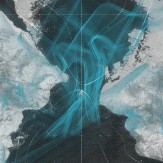
Manipulated Life Cycles
-
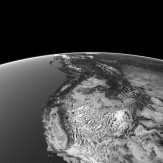
Fire and Ice
-
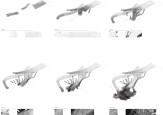
Transformative Materiality
-
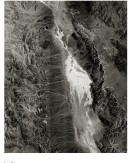
Night and Day
-

The Colorado Sand Dunes
-

Volcanic Archipelago
Back
Manipulated Life Cycles
Manipulated Life Cycles
The Bering Strait: Seasonal Transformations
Melanie Fessel
The Bering Strait: where today changes into tomorrow, is located between the westernmost point of the North American continent and the easternmost point of the Asian continent close to the polar circle. The international dateline and the national boundaries merge together in the midst between two islands, The island of Big Diomede in Russia and the island of Little Diomede in the USA, were the two continents are only 2.4miles (4km) apart and marked the border between the Soviet Union and the United States.
The Bering Land Bridge theory recognizes earliest migration of the North American continent from Asia across the Land Bridge that has been formed due to sea level submerge during cycles of global cooling, where sea water became concentrated in the ice caps. The extraordinary seasonal differences due to extreme temperature changes define a unique and harsh environment only to be handled by the Inuit traditions of the native Alaska population. The cycles of Sea Ice are extremely altered by the effects of global warming and endanger the traditional lifestyle of the natives, their culture and habitat. Climate change represents a threat to their human rights.
The majority of life in the ocean--nearly 90 percent--is made up of phytoplankton, which are tiny algae and other organisms that live in the ocean's surface layer and utilize the sun's rays for food and growth. Since the Strait is now free of ice during summer it is opened to commercial shipping routes, which alter even further this already fragile system, the proposition within these seasonal transformations is to respect the human rights of the Inuit people and use their local techniques to help solve worldʼs climate crisis.
Fire and Ice
Fire and Ice: Crater Lake, Oregon
Aikaterini Kefalogianni
Transformative Materiality
Transformative Materiality
Jonathan Heckert
The study of the Bering Glacier is part of an investigative research into the properties of material transformations formed under the shifting weight and pressures of a continually reforming landscape. The concepts of duration, time and scale are critically important in understanding the complex systems of interaction that regulate and reform the site as a dialectic between natural and human forces. Thus, the “pure materiality” of the site is always under a constant negotiation. Shifts between ice and water can also be described by the tensions of surface and subsurface movements, through the deformations of ice undergoing both plastic and elastic transformations. The fluidity of the ice at deeper sections alters the surface conditions, where it breaks and splits. This forms deep crevasses that collect and distribute water along and through the glacial system until it reaches the terminus, and eventually the Gulf of Alaska.
The Bering Glacier is a natural phenomenon that has the ability to harmonize both local and global forces. It does this through a historical indexing of its environment and continual re-grafting of its surroundings. The first point of activation for the glacier is called the “ablation line,” which starts at about 200 meters and rises to 1000 meters. This ablation zone is where the material shift becomes its most expressive, but also stabilized enough for scientific study. The deflection of flowing ice toward the surface of the glacier, coupled with the plastic to elastic divergence and solid ice to liquid water transformation, creates a site of continual becoming. This system of active transformation displaces 1.3 gigatons of fresh water into the Gulf of Alaska every year. As the melt rate increases along with the upper limits of the ablation line, this number will also only continue to increase.
My proposal for the site is a new infrastructural typology capable of fluctuating and transforming as the site transformed. Single individual “energy collectors” would be placed along the ablation line of the glacier in groups. As the ice surges, or melts into water, the collectors would move with the natural shifts of the material. At each point of transformation “energy” is released from the material into the collectors for storage.
The collectors are free to move as the glacier moves, allowing themselves to congregate into areas of the highest potential energy within the glacial system. In a sense, they become part of the natural process and not a solution to fix or falsely alter its state. The collectors transcribe and project the evolution of the landscape - in a way remapping the territory - for future events and purposes. For example, the collectors could be made of a flexible material, which, while anchored into the ice, could be designed to move with the wind using the atmosphere to generate energy. The freezing of the ice could also be used to create mechanical work upon the anchored section of the collector, as the ice expands and contracts. Once the ice melts, the collector would be free to move down the glacier, absorbing all energy along its path. In this way the collector becomes a marker, an artifact that can both measure and inflect change into its surrounding environment. As the glacier retreats the collectors become part of the archeology of the site, again marking and forming the new terrain.
Night and Day
Night and Day: The Life of Death Valley
David Ross
The Colorado Sand Dunes
The Colorado Sand Dunes
Katerina Kourkoula
Sand dunes are the physical manifestation of wind forces. Dunes are molded through the aggregate movement of sand grains that are transported via those forces. The sand that is constantly in motion is known as aeolian sand, a term that stems from the mythologies assigned to wind.
My proposal is an intervention wherein obstacles are placed on the dune surface. When wind hits an obstacle its direction is altered. The sand grains carried by the wind cannot follow the sudden change of direction, and the wind and sand paths become separated. The sand formations cease to be visual manifestations of the wind forces, but instead a controlled creation.
Volcanic Archipelago
Volcanic Archipelago: Hawaii Lava Tubes
Wei-Che Yu

